Weather Radar Insights for Kiteboarding in Gulf Breeze
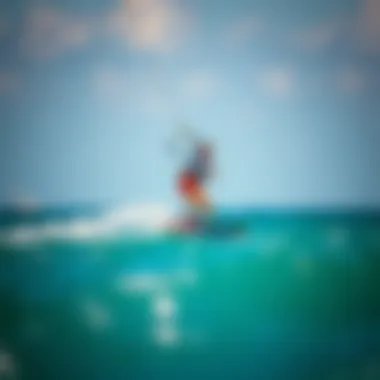
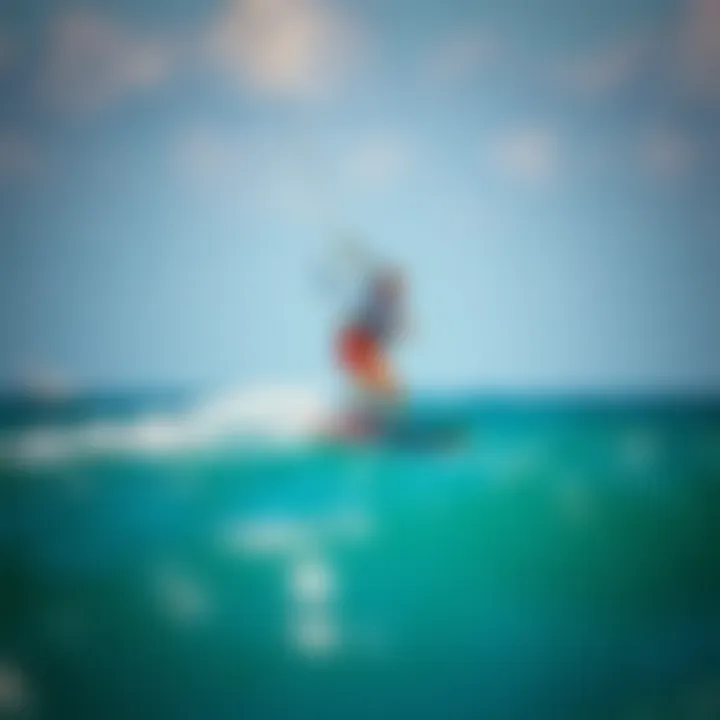
Intro
Gulf Breeze, Florida, is renowned for its stunning coastal scenery and optimal weather conditions, making it a mecca for kiteboarding enthusiasts. Before one takes to the skies, however, understanding weather radar and local meteorological nuances can mean the difference between a thrilling ride and a harrowing experience. This article will shed light on how specific weather systems and wind patterns influence kiteboarding in this charming locale. Armed with this knowledge, kiters can make well-informed choices that not only enhance their enjoyment but also prioritize safety.
In the world of kiteboarding, the wind is not just a friend; it's an element to be respected and understood thoroughly. It shifts, swells, and occasionally plays tricks, and being equipped with the right gear ensures that you're prepared for whatever Mother Nature decides to throw at you.
In the lines that follow, we'll break down essential aspects of gear selection and skill development in context with the local weather environment. To maximize your experiences on the water, let's delve into these key areas.
Understanding Weather Radar
Understanding weather radar is crucial, especially for kiteboarders who rely heavily on accurate weather information to ensure safe and enjoyable experiences on the water. Weather radar systems allow for real-time monitoring of atmospheric conditions, helping enthusiasts anticipate changes in wind patterns, storms, and other factors that can impact kiteboarding.
Having knowledge about how weather radar works and its various types becomes essential in interpreting the data it provides. Kiteboarders can utilize this technology to make informed decisions about when to head out for a session, avoiding hazardous weather conditions that could turn a fun outing into a risky venture.
In this article, we will explore the fundamentals of weather radar, how it functions, and the specific types that are in use today. By acquiring this understanding, readers will be better equipped to navigate the elements, maximizing their enjoyment while minimizing risks during their kiteboarding activities.
What is Weather Radar?
Weather radar is a sophisticated technological system designed to detect and predict meteorological conditions. In essence, it sends out pulses of microwave energy into the atmosphere and measures the echoes that bounce back from precipitation particles, such as raindrops or snowflakes. Through this, weather radar can provide crucial insights into where storms are, their intensity, and movement patterns.
This technology is not just beneficial for meteorologists but also immensely useful for everyday people, like kiteboarders, who need timely weather information. Having access to radar data helps kiteboarders make better choices about when to hit the water, helping ensure a safer and more enjoyable experience.
How Does Weather Radar Work?
At a fundamental level, weather radar operates by transmitting a series of electromagnetic waves and then analyzing the signals that return after bouncing off precipitation. This interaction allows radar systems to gather critical information about weather systems, including their size, shape, and intensity.
The radar does not directly measure rain or snow; rather, it senses the amount of energy bouncing back to the sensor. Higher intensity returns often indicate more substantial weather events, while a weak return may signify lighter precipitation. The data collected is then transformed into graphical representations, displaying the evolving weather patterns in real-time.
Types of Weather Radar Systems
Different types of weather radar systems serve distinct functions and offer various advantages, thus impacting how kiteboarders interpret weather conditions. Here, we break down three primary types of weather radar systems most relevant to kiteboarding:
Standard Doppler Radar
Standard Doppler radar is widely regarded in meteorology for its ability to measure the velocity of precipitation particles. This system not only identifies whether precipitation is occurring but also provides crucial data on wind speed and direction. A key characteristic of this type of radar is its capacity to detect storm movement, which is particularly vital for kiteboarders who must be aware of shifting weather conditions.
The unique feature of Standard Doppler radar is its capability to determine whether rain is approaching or receding. Such knowledge can help kiteboarders plan according to incoming weather, ensuring they are not caught unprepared. However, it does have some limitations, particularly in terms of detecting lighter precipitation, which may lead to underestimations of certain weather events.
Dual-Polarization Radar
Dual-polarization radar takes weather detection a step further by transmitting radar signals in both horizontal and vertical orientations. This technology provides improved identification of precipitation types, making it beneficial for distinguishing between rain, snow, and even hail.
Its distinguishing feature is its ability to analyze shape, size, and phase of the precipitation particles, giving a more detailed view of the weather conditions. For kiteboarders, Dual-polarization radar can ensure they are well-informed about the types of precipitation to expect, thus helping avoid situations like kiteboarding in light rain versus heavy downpours. However, this system might be more complex to interpret than a standard radar, which could be a drawback for some users.
Phased Array Radar
Phased array radar is a more advanced radar technology that enhances speed and precision in weather monitoring. Rather than rotating like traditional radars, phased array systems utilize an array of antennas that enable them to scan large areas quickly. This feature means that kiteboarders can receive updates on fast-evolving weather conditions much faster.
The ability to provide rapid weather updates can be critical for outdoor activities like kiteboarding, where conditions may change suddenly. Additionally, this system can capture fine-scale details in real-time, allowing for better forecasting of localized weather phenomena. However, the cost and complexity of phased array systems may pose challenges in terms of availability at smaller local meteorological services.
In summary, understanding the different types of weather radar systems is fundamental for kiteboarders who want to optimize their time on the water. By comprehending how these systems function, enthusiasts can make astute decisions based on the weather data they receive.
Weather Patterns in Gulf Breeze, FL
Understanding the weather patterns of Gulf Breeze, FL, is crucial for kiteboarders, as it directly impacts wind conditions, temperature, and overall safety. Kiteboarding relies heavily on specific weather conditions, making it essential for practitioners to be knowledgeable about local patterns. Those who can interpret these patterns possess a competitive edge, elevating their experience and safety while navigating unpredictable waters.
Seasonal Variations
The seasonal changes in Gulf Breeze alter not just the scenery, but also the conditions on the water. Every season brings its unique winds, temperatures, and precipitation, affecting kiteboarding activities in distinct ways. Knowing these variations can lead to more satisfying rides and safer conditions.
Spring: Winds and Storms
Spring in Gulf Breeze can be a boisterous season. With winds picking up and storms brewing, kiteboarders often find themselves flirting with nature's whims. The key characteristic of this season is the strong winds that frequently accompany passing storms. This makes spring a beneficial choice for experienced kiteboarders who thrive on powerful breezes. However, these winds can also bring sudden storms, which can be a double-edged sword. Kiteboarders are advised to keep an eye on weather radar, as spring storms can roll in quickly.
Advantages:
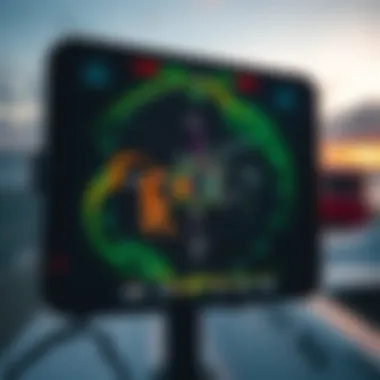
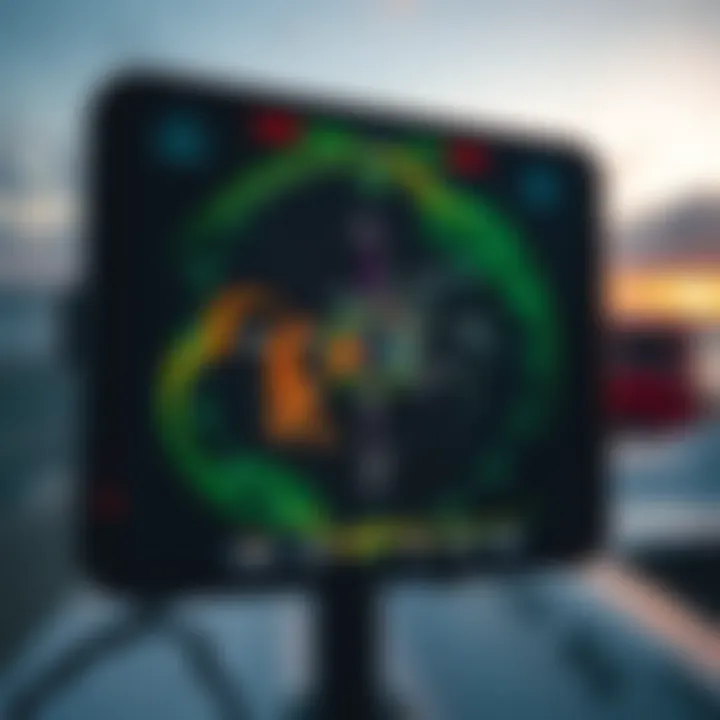
- Strong winds favorable for advancing skills
- Ideal conditions for seasoned kiteboarders
Disadvantages:
- Unpredictable storms may pose real risks
- Requires quick decision-making and vigilance
Summer: Heat and Humidity
As summer kicks in, heat and humidity take center stage. The sun beats down, and moisture in the air can lead to some sticky conditions. Kiteboarders often enjoy consistent winds during this time, making it a popular season for enthusiasts. The trade winds typically ease the sweltering heat, creating more tolerable conditions for a long day on the water. However, the heat can be exhausting, and kiteboarders need to stay hydrated.
Unique Feature:
- Reliable winds can be a boon for kiteboarding events
Advantages:
- Stable wind patterns make for smoother rides
- Ideal for beginners wanting to get accustomed
Disadvantages:
- High humidity may cause fatigue and dehydration
- Occasional afternoon thunderstorms could sneak up unexpectedly
Fall: Transitional Weather
Fall brings about a transition, cooling down the heat of summer while also serving as a bridge to winter. The key characteristic of fall is its unpredictable weather, where warm days flirt with cool nights. Kiteboarders may see variable conditions, making it a bit of a gamble. For those willing to embrace this uncertainty, fall can yield enjoyable experiences.
Advantages:
- Unique opportunity to experience varied conditions
- Ideal for honing adaptability on the water
Disadvantages:
- Winds can be inconsistent, leading to challenges
- Requires close attention to weather data to maximize enjoyment
Winter: Cooler Breezes
Winter rolls in with a refreshing chill, and the winds tend to shift. Cooler breezes and stable conditions make this a popular choice for skilled kiteboarders who favor crisp air and strong winds. The beaches might be less crowded, providing a more serene atmosphere on the water. However, cold temperatures and wet conditions can deter some from venturing out.
Unique Feature:
- Winter winds are often more reliable for high-level maneuvers
Advantages:
- Less crowded beaches offer more space to ride
- Cooler weather may reduce fatigue from heat
Disadvantages:
- Risk of hypothermia requires appropriate gear
- Some might find the conditions too biting for comfort
Microclimates and Their Effects
Microclimates are pockets of localized weather variation that can significantly affect kiteboarding. Factors like proximity to the water, the local landscape, and urban development all influence these mini-weather systems. For kiteboarders, understanding microclimates can be the difference between a thrilling ride and being unexpectedly grounded. Being attuned to these nuances allows kiteboarders to better prepare and take advantage of optimal conditions.
Kiteboarding and Weather Radar
Understanding the fusion of kiteboarding and weather radar is essential for anyone keen on hitting the waters of Gulf Breeze, Florida. Kiteboarding requires precise conditions—primarily wind strength and direction, making glimpses at weather radar a vital part of the sport. It’s not just about catching waves; it’s about reading the weather like a map. In Gulf Breeze, where coastal conditions can shift like a chameleon, knowing how to interpret weather data can elevate the kiteboarding experience immensely.
Importance of Weather Radar for Kiteboarders
Weather radar serves as a lifesaver for kiteboarders, giving real-time updates on weather conditions and storms that could put a damper on a good day out on the water. With Gulf Breeze’s unique weather patterns, utilizing radar can help kiteboarders prepare for sudden wind shifts or even storms that may not be immediately apparent from the shore. Here are some key advantages:
- Real-Time Monitoring: Weather systems can move quickly over the water. By checking radar, kiteboarders can adjust their plans right before heading out.
- Safety Awareness: Understanding incoming storms and thunderstorms through radar data can prevent hazardous situations while kiteboarding. Getting caught in a storm is not fun for anyone.
- Optimizing Conditions: Different kiteboarding tricks rely heavily on specific wind conditions. Good radar interpretation can helpnavigate to prime spots along the coast where wind conditions are just right for flying high.
Interpreting Radar Data for Kiteboarding Conditions
Navigating radar data isn’t as daunting as it sounds. Once you grasp the basics, it’s like having a cheat sheet for the elements. Radar images may be filled with colors and symbols that at first glance might seem confusing. So how does one make heads or tails out of it?
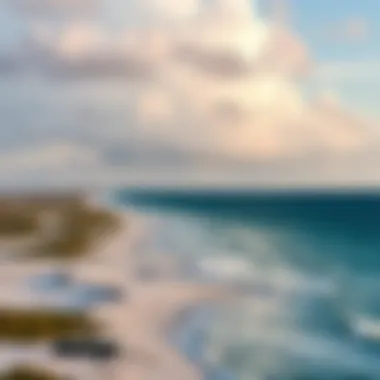
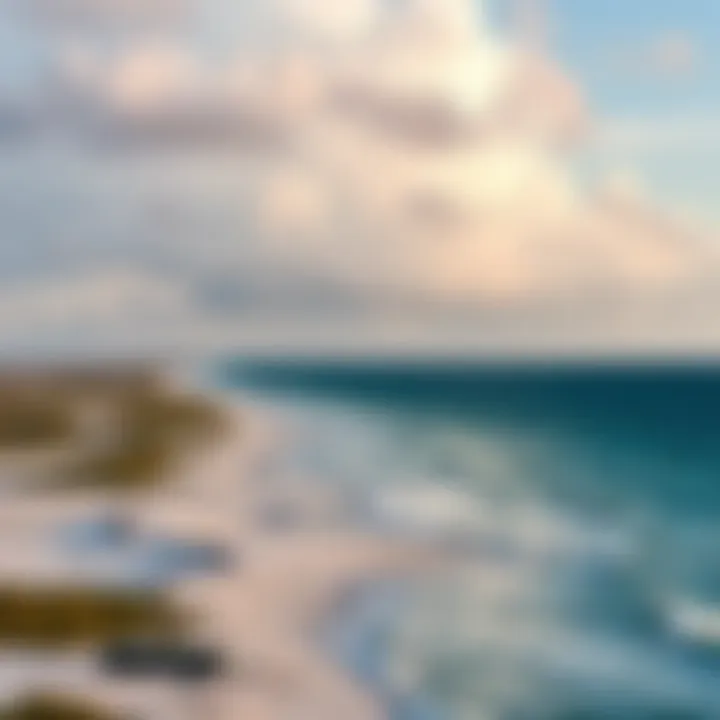
- Color Coding: Radar images usually use colors to indicate precipitation intensity. Warmer colors like orange and red typically show heavier rainfall, whereas cooler shades like green suggest lighter rain. For kiteboarders, knowing where precipitation lies can help in planning sessions.
- Wind Direction Indicators: Certain radars also give indications of wind direction. Understanding where the wind is blowing from and its intensity can mean the difference between a smooth ride or a rough day.
- Real-Time Updates: Apps increasingly offer live updates based on radar data. This means that just before leaving your house, a quick check could mean the difference between hitting the waves or staying safe on land.
"In the world of kiteboarding, weather radar isn't just a tool; it's a lifeline ensuring every journey into the wind is as thrilling as it is safe."
Overall, aligning kiteboarding activities with precise weather outlooks through radar can transform your sessions into something memorable—just make sure to keep a weather eye on the horizon!
Using Weather Radar Effectively
Understanding how to use weather radar effectively can make or break a kiteboarder's day on the water. The right wind conditions, as indicated by radar, can turn an average outing into an exhilarating adventure or, conversely, into a troublesome experience, laden with unexpected hazards. Enthusiasts, instructors, and event organizers alike must grasp the nuances of weather radar to optimize their kiteboarding sessions in Gulf Breeze, FL.
Reading Radar Screens
Radar screens present a wealth of information, which can be daunting at first sight. These screens display multiple layers of data, but knowing what to focus on is key. Look for the wind vectors, which show wind speed and direction. In Gulf Breeze, a subtle shift in these vectors can indicate an upcoming change in conditions. The range of the radar is also essential; make sure you are viewing data that reflects your immediate area.
Some radar platforms allow users to zoom in on specific locations, making it easier to analyze local conditions. Be aware of any updates that may roll in every few minutes, as conditions can shift quickly, especially near coastal areas.
Understanding Radar Colors and Symbols
Colors and symbols play a vital role in deciphering weather radar information accurately. Generally, colder colors like blue signify light rain, while warmer colors like red may indicate thunderstorms or heavy rain. This color coding gives kiteboarders a quick visual cue about the forecasted conditions.
Moreover, understanding the symbols is equally crucial. An icon or symbol can indicate cloud formations, precipitation types, or warnings about severe weather. Each radar service may vary slightly in its color scheme and symbol set, so familiarize yourself with the specific service you plan to use regularly. This knowledge will help you make better-informed decisions.
Integrating Radar Data with Other Sources
To truly maximize the effectiveness of weather radar, it's wise to integrate data from other sources. For instance, using apps like Windy or SailFlow can supplement radar data by offering real-time wind readings. Additionally, checking local forecasts from trusted meteorological websites, such as NOAA or Weather.com, can provide a broader context for what you see on the radar.
Weather forums on platforms like Reddit can also yield insights and experiences from fellow kiteboarders who may have recently navigated similar conditions.
Combining these sources allows you to create a more comprehensive picture of the weather landscape. In doing so, you become better equipped to anticipate shifts in the wind or weather, ensuring a more enjoyable and safe kiteboarding experience.
"Kiteboarding is not just about riding the wind; it's about understanding it." - Kiteboarding Enthusiast
In Gulf Breeze, the combination of advanced radar technology and local knowledge on the ground can yield remarkably accurate predictions, setting the stage for an enjoyable time on the water, rain or shine.
Forecasting Weather for Kiteboarding
Weather forecasting plays a pivotal role in kiteboarding, especially in locations like Gulf Breeze, FL, where local conditions can change faster than a kite can catch the wind. An effective forecast is not just a luxury but a necessity for anyone looking to enjoy a safe and exhilarating day on the water. Understanding the various aspects of forecasting can mean the difference between an unforgettable session and a day cut short by unexpected weather.
Reliability of Weather Forecasts
When we talk about reliability in weather forecasts, it’s like trying to hit a moving target—accuracy can fluctuate widely. The forecasters use an amalgamation of satellite data, radars, and computer models to produce their predictions. However, kiteboarders should remember that even the most advanced technology has its limitations.
Reliable forecasts often depend on multiple factors such as:
- Data quality: The better the data fed into the forecasting model, the more reliable the outputs. Locations with numerous weather stations tend to have more accurate forecasts.
- Temporal resolution: Forecasts come in different time frames, where short-term predictions are often more reliable than those stretching several days into the future.
- Local knowledge: Understanding how local geography, like the shoreline and offshore winds, impacts regular weather patterns significantly enhances the prediction’s reliability.
"Considering the varied landscapes and microclimates of Gulf Breeze can enhance your understanding of forecasts. Sometimes, what looks like a clear day ahead might change in the blink of an eye due to coastal winds or unexpected cloud formations."
Short-Range vs. Long-Range Forecasting
In the world of kiteboarding, distinguishing between short-range and long-range forecasts is crucial. Both have their merits and limitations, and knowing when to utilize each can sharpen one's decision-making before hitting the water.
Short-Range Forecasting
- Generally covers a few hours to a couple of days.
- Focused on immediate conditions like wind speed, direction, and precipitation.
- Useful for real-time kiteboarding conditions, especially for spontaneous trips.
Long-Range Forecasting
- Aimed at predicting weather conditions over several days to weeks.
- Often less accurate concerning local changes, but can point out trends like seasonal shifts.
- Important for planning future kiteboarding trips, particularly for those who are looking to schedule events or weekend getaways.
Incorporating a mix of both short-range and long-range forecasts can be the best tactical approach. For instance, checking a long-range forecast may reveal ideal conditions for a kiteboarding event scheduled further down the line, while keeping an eye on short-range updates can help you seize the moment and hit the water when conditions are just right.
Safety Precautions in Kiteboarding
Kiteboarding might seem like a thrilling water sport where freedom reigns over the waves, but safety shouldn't take a backseat in the excitement. Understanding safety precautions is crucial for every kiteboarder, whether you're a newbie just getting your feet wet or a seasoned pro dancing with the wind. By emphasizing and adhering to essential safety practices, it's possible to minimize risks and ensure a more enjoyable experience on the water.
Monitoring Weather Changes
Weather can be a volatile companion for kiteboarders in Gulf Breeze, FL. The seaside environment makes it vital to keep a keen eye on the skies and shifting conditions. While weather radar provides valuable insights, it's often just the tip of the iceberg. Here’s how to effectively monitor changes:
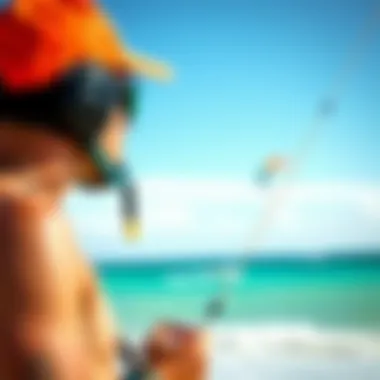
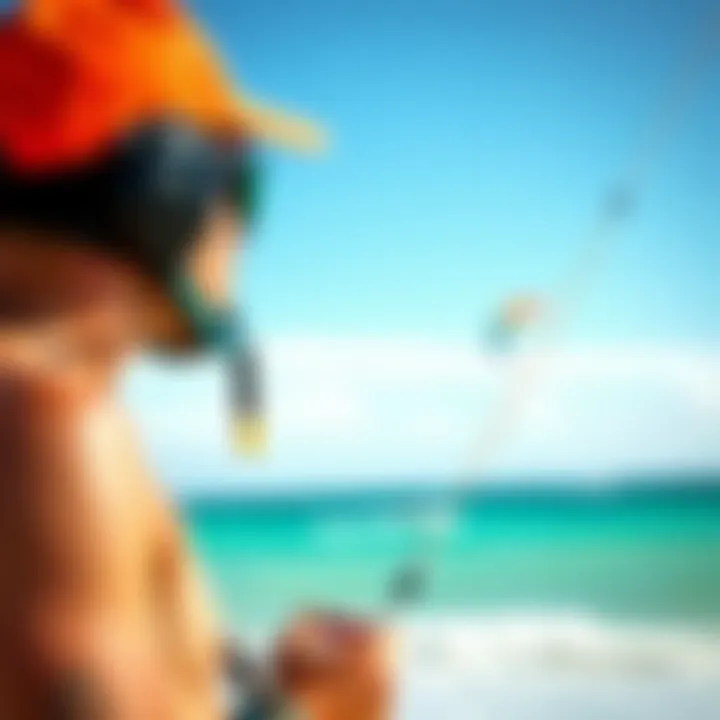
- Check Regularly: Make it a habit to look at weather forecasts before heading out. As conditions can change in the blink of an eye, having the latest updates can be a game changer. Use apps like Windy or local weather websites to get real-time updates specific to your area.
- Visibility: When you're out and about, keep an eye on cloud formations. Dark clouds often signal impending storms, and it’s smart to pack it in when you see them rolling in.
- Wind Patterns: Understanding local wind patterns is vital. For instance, certain times of year can bring sudden gusts, particularly in the morning when it’s cooler, or in the late afternoon when the heat spikes. Knowing this helps kiteboarders adapt in real-time.
- Listen for Alerts: Many weather apps have alert systems that can notify you of sudden changes or severe weather warnings. Turn these on; they could be a lifesaver.
- Talk to Locals: Experienced kiteboarders in Gulf Breeze have a wealth of knowledge about prevailing weather conditions. Don’t hesitate to ask for insights before heading out.
"Understanding local weather nuances, combined with radar insights, can make the difference between a fab day on the water and a day cut short by nature's wrath."
Understanding Lightning Risks
Lightning isn’t just a summer scare; it’s a very real threat to kiteboarders. With the use of large equipment like kites and poles, you can easily become a target when storms roll in. Here are steps to better understand and manage lightning risks:
- Seek Shelter Immediately: If you hear thunder, it’s best to get off the water. Even a distant rumble can precede a storm, and the safest option is to seek shelter on land.
- Lightning Safety Protocols: Stay away from tall structures and water. Metal equipment and water are perfect conductors for lightning, and being near either increases your risk.
- Timing is Key: Many thunderstorms have distinct weather behaviors; they often develop in the afternoon heat. Planning your kiteboarding sessions early in the day or later in the evening could help avoid these hazards.
- Know When to Cut It: If you’re on the water and you see lightning, it’s time to cut your session short and head for shore. Timing can be everything, so don’t hesitate.
In understanding both weather changes and lightning risks, kiteboarders stand a better chance of enjoying Gulf Breeze’s beautiful conditions without incurring unnecessary dangers. These practices not only ensure safer outings but can also enhance the overall experience. Always remember, it’s better to be safe than sorry!
Environmental Considerations for Kiteboarders
Understanding the environmental dynamics that interact with kiteboarding is crucial for enthusiasts looking to enjoy this recreational sport responsibly. Weather affects the conditions of the water, the safety of the area, and even the wildlife and ecosystems around Gulf Breeze, FL. By actively considering these elements, kiteboarders can not only enhance their experience but also contribute positively to the local environment.
Impact of Weather on Local Ecosystems
Weather patterns have a substantial impact on coastal ecosystems. In Gulf Breeze, fluctuations in wind, rainfall, and temperatures can influence everything from water salinity levels to the health of marine life. For instance, heavy rains can lead to runoff that introduces pollutants into the water, which can harm delicate ecosystems.
Additionally, strong winds can affect not just kiteboarders but also nesting birds and other wildlife along the beaches. Kiteboarders are encouraged to be mindful of their surroundings, particularly during spring and summer when many birds are nesting. The following points highlight important considerations:
- Seasonal Changes: Be aware of different wildlife patterns during various seasons. Migratory birds often flock to coastal areas during specific times of the year, and their nesting sites should be avoided.
- Water Quality: Regularly checking local water quality reports can help ensure that kiteboarding doesn’t take place in areas that may be unsafe due to contamination from rain runoff or industrial sources.
- Tidal Effects: Understanding the local tides and how they interact with wind patterns can help kiteboarders trigger less harm to marine habitats.
“The ocean is a shared resource; keeping it clean and safe is a responsibility we all share.”
Promoting Responsible Kiteboarding Practices
As part of a vibrant kiteboarding community, it's vital for practitioners to advocate for and engage in responsible practices. This approach not only preserves nature but enhances the kiteboarding experience itself. Here are several effective ways to promote this:
- Education and Awareness: Educating fellow kiteboarders about the local ecosystem encourages collective responsibility. Share information on local wildlife, habitats, and responsible kiteboarding techniques.
- Leave No Trace: Always clean up after oneself. This includes not leaving equipment, trash, or personal belongings behind. Such practices protect the area from degradation and show respect for nature.
- Respect Local Regulations: Familiarizing oneself with local laws regarding kiteboarding can prevent unintentionally harming environments that are crucial for both human recreation and wildlife.
- Advocacy: Join local environmental groups or forums to stay informed about initiatives aimed at preserving coastal areas. Engaging with communities promotes a unified effort towards sustainability.
Incorporating these practices into a kiteboarding routine builds a healthier relationship between the sport and the environment, paving the way for a more sustainable future. Ultimately, kiteboarding should not just be about the thrill but also about carrying the torch for environmental stewardship in the Gulf Breeze community. By prioritizing these considerations, kiteboarders can ensure that they enjoy their sport while protecting the ecosystem that supports it.
For further resources on environmental practices in sports, visit EPA: Environmental Protection Agency or check out NOAA: National Oceanic and Atmospheric Administration.
Contributions of Technology in Weather Observation
Understanding the Contributions of Technology in Weather Observation is crucial for kiteboarders in Gulf Breeze, FL. As weather plays a significant role in the sport, using advanced technology enables enthusiasts to forecast conditions with greater accuracy. Modern tools allow riders to make more informed decisions about when to hit the waves, helping improve both safety and enjoyment.
Advancements in Weather Radar Technology
Recent advancements in weather radar technology have transformed how we perceive and react to atmospheric conditions. Traditional radar systems primarily provided basic imagery showing precipitation, but the latest innovations offer a wealth of detail. For instance, dual-polarization radar technology allows meteorologists to analyze the shape and size of rain droplets. This results in more precise forecasts regarding rainfall intensity, which is beneficial for kiteboarders. Though these systems are often complex, the essence boils down to a clearer, more accurate picture of what's happening in the skies above.
Moreover, phased array radar has emerged as a game-changer. With this technology, meteorologists can gather data much faster than conventional systems. Instead of swinging around to get a new angle, phased array radars can scan multiple directions at once. This feature is particularly handy when you’re trying to determine the onset of a storm cloud, as it can provide near-real-time updates.
For kiteboarders, these advancements mean more than just slick technology. More accurate radar can also directly translate to a safer experience on the water. Ensuring that you're aware of impending weather changes enables you to respond quickly and effectively, giving you plenty of time to pack up and head to safety if need be.
Mobile Applications for Weather Monitoring
In addition to radar improvements, mobile applications have revolutionized how kiteboarders in Gulf Breeze keep track of weather. Nowadays, it’s not uncommon to see a rider checking their smartphone for updates before taking to the skies. Apps tailored for water sports provide real-time information about wind speeds, tide levels, and tempest warnings. Some popular options include Windy, Kitefly, and iKitesurf, each offering unique features for their users.
The benefit of these applications lies in their user-friendly interfaces and community-driven data. Many of these platforms allow users to share real-time updates about conditions. This grassroots information can be incredibly valuable, as local riders often report wind changes or storm activities that a radar might miss. Wind maps generated by these apps can show not only current conditions but also predictive models of how conditions might evolve throughout the day.
With technology at our fingertips, kiteboarders can be more proactive and informed, making well-timed decisions that enhance their time on the water.
Given the ever-changing nature of weather, relying solely on one source is risky. Combining real-time radar data with mobile apps offers a richer picture, allowing for a nuanced understanding of what to expect. This integration is especially crucial for those looking to perfect their kiteboarding skills, whether they are just starting or already experts.
While technology undoubtedly brings numerous benefits, it’s essential to remember that no device can replace common sense and experience. As conditions can change in the blink of an eye, it's critical to remain vigilant and attentive to the skies above, regardless of advancements in weather tracking.
Finale
In summarizing the discussions throughout this article, it is evident that understanding weather radar is crucial for kiteboarders in Gulf Breeze, FL. Kiteboarding isn't merely about catching the wind; it thrives on the nuanced interplay of weather conditions that can change in an instant. By utilizing weather radar, enthusiasts can gain insights about wind speed, potential storms, and humidity levels—elements that can spell the difference between a harmonious day on the water and a perilous situation.
Key Takeaways
- Informed Decisions: Kiteboarders who understand radar data can make smarter choices about when to hit the water. This empowers them to choose conditions that maximize enjoyment while minimizing risks.
- Safety First: The integration of weather radar technology helps kiteboarders be aware of sudden weather changes, particularly thunderstorms, which are common in the area. Being attuned to these shifts is essential for ensuring safety on the water.
- Environmental Awareness: With real-time insights provided by weather radar, kiteboarders can also become more environmentally conscious. Understanding the impact of weather patterns on local ecosystems encourages responsible practices, ensuring that the natural beauty of Gulf Breeze remains intact for generations.
Staying updated with weather radar is like having a compass in the vast ocean of kiteboarding. It guides you through uncertainty, enabling you to harness nature's elements rather than fighting against them.
Overall Benefits
For kiteboarders—whether beginners or seasoned pros—grasping the mechanisms of weather radar enhances their overall experience. It fosters a culture of safety, encourages environmental stewardship, and strengthens the community of riders who share this thrilling sport. As Gulf Breeze continues to be a sought-after destination for kiteboarding, leveraging such technological advancements can elevate the sport while keeping practitioners secure.















